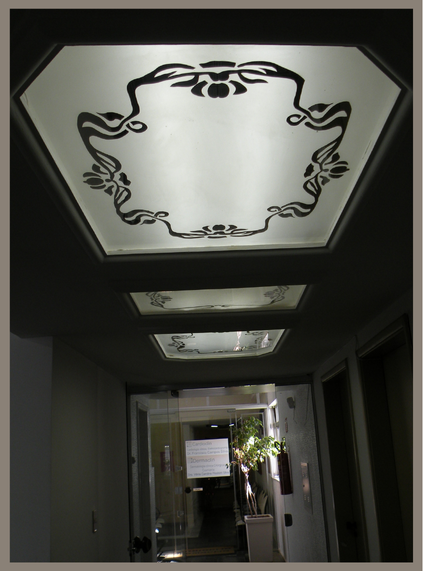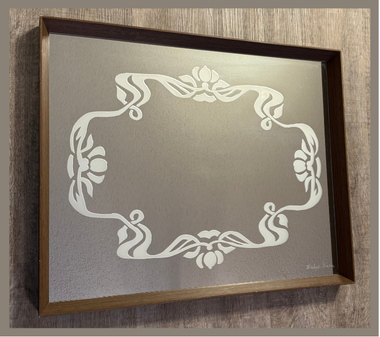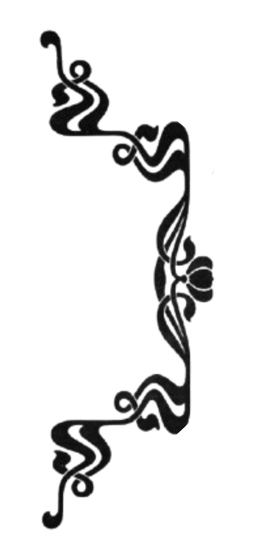
This book, from which I chose the decorative motifs to carry out my work on the ceiling of the waiting room at the Clinest Dental Clinic, is a full-color reproduction of 40 plates from two portfolios titled Les Fleurs et Leurs Applications Décoratives, originally published by Librairie des Arts Décoratifs (A. Calavas), Paris [1901], and created by E.A. Séguy.
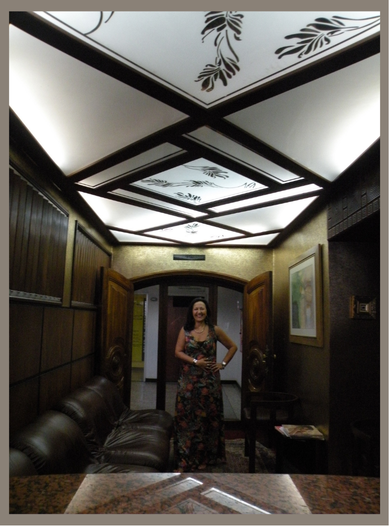
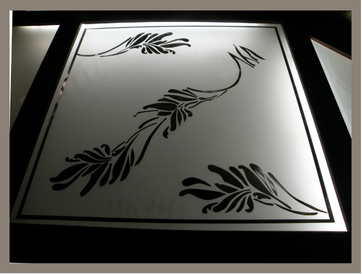
Eugène Alain Séguy (1877–1951) was one of the foremost French designers of the Art Nouveau period, known for his exquisite decorative patterns inspired by nature, particularly flowers and insects. He created several influential pattern books, which provided designers with richly detailed, copyright-free motifs for use in textiles, wallpaper, and other decorative arts.The 1977 reprint of the portfolios Les Fleurs et Leurs Applications Décoratives was a source of further inspiration for my art. Some pieces I have only as enlarged drawings, without photographic records. Eugène Alain Séguy truly left a great legacy, and this book is incredibly rich.
A skylight is a glazed opening in the ceiling that allows natural light to enter. It is decorative and features a design by H. de Waroquier, taken from a reproduction of the book Dekorative Vorbilder.
I used a mirror, and the design was engraved on the back—removing the reflective layer—allowing the light to pass through. The wooden frame had already been determined by my client’s architect, and with the flowing Art Nouveau design, I was able to achieve both functionality and a sophisticated aesthetic.
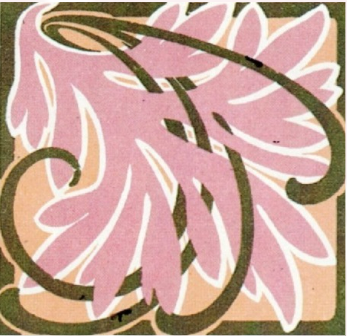
About the Artist
Henry de Waroquier (Paris, 1881–1970) was a painter, sculptor, draftsman, printmaker, teacher, and poet.
He studied at the École Nationale Supérieure des Arts Décoratifs in Paris and received private instruction from architect Charles Genuys. In 1903, he was appointed professor of composition at the Estienne School of Art and Industry in Paris.
A frequent traveler to Venice, he produced numerous paintings, drawings, and etchings capturing the city’s unique atmosphere.
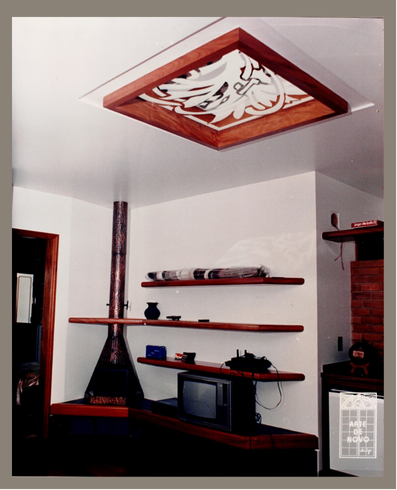
For the skylight in the ceiling of Dr. Maurice’s clinic entrance hall, I selected a decorative border. Borders often serve as essential elements in Art Nouveau artworks. Sandblasting was applied to the back of the mirror, creating a larger area for the built-in lighting to shine through, while the design was mirrored.
I really like this border for its composition and movement, and I have also used it on a mirror—this time with the design engraved on the front.
